Did you know that only 9% of all plastic waste ever produced has been recycled? The rest ends up littering landfills, choking incinerators, or polluting our oceans. This alarming reality exposes just how deep the recycling lies go—and why most of us don’t have the full story.
"Only 9% of all plastic waste ever produced has been recycled. The rest ends up in landfills, incinerators, or our oceans."
Unveiling the Truth: The Startling Reality Behind Recycling Lies
For decades, we’ve been told that tossing a plastic bottle into the recycling bin helps “save the planet.” The real truth is far more complicated, and for most people, unsettling. Despite what many recycling campaigns claim, the majority of plastic waste is never recycled. Much of it is simply buried, burned, or lost, fueling what is now acknowledged as a global plastic crisis. The plastics industry, bolstered by trade associations and powerful oil and gas companies, has woven a narrative of hope around plastic recycling—a narrative that is increasingly being challenged as a recycling lie by experts, journalists, and even attorney generals like Rob Bonta.
This article unpacks the recycling lies that have shaped public perception, explaining how plastic recycling became a convenient excuse for companies to dodge accountability for mounting solid waste. We’ll examine how industry-funded public relations campaigns, chemical recycling promises, and misleading plastic symbols on products all contribute to confusion about the actual recycling rate. If you’ve ever wondered why the plastic in your bin rarely ends up being recycled, or if personal effort can really solve the plastic waste problem, you’re not alone. The answers lie in the intersection of corporate interest, policy inertias, and the realities of solid waste management.
What You'll Learn About Recycling Lies
- The origins and perpetuation of recycling lies
- How the plastics industry and plastic recycling contribute to public misconceptions
- Key criticisms and realities of plastic recycling and plastic waste management
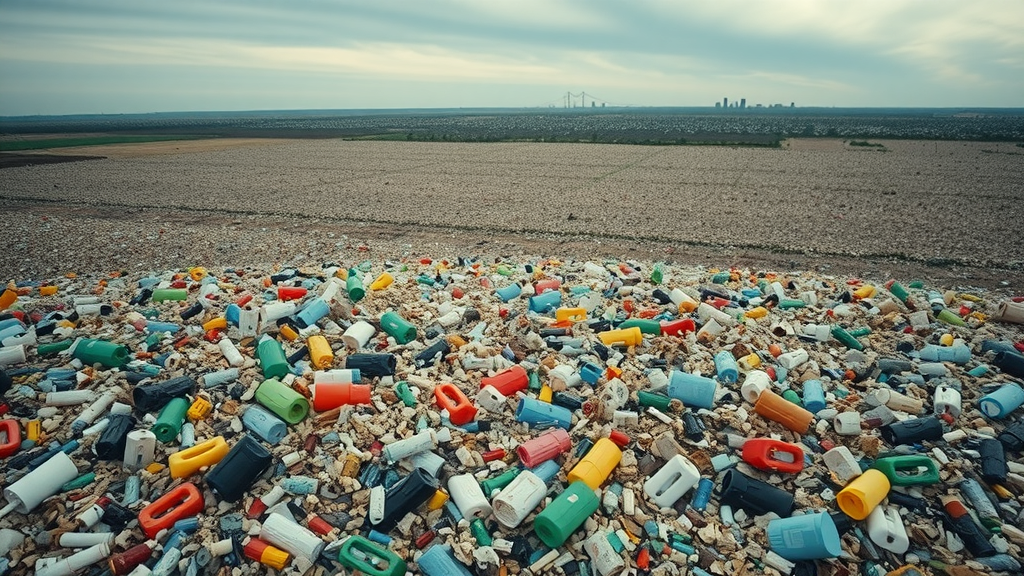
The Origins of Recycling Lies and How They Shape Public Perception
The recycling lie wasn’t born overnight. Instead, it evolved alongside the meteoric rise of the plastics industry and its dependence on fossil fuel and oil and gas companies. In the latter half of the 20th century, the largest oil producers and industry trade groups realized their soaring plastic production was facing mounting criticism from environmentalists, public officials, and savvy consumers. To offset this backlash, these groups—embodied by trade associations and ‘plastics councils’—launched extensive recycling campaigns, saturating television, print, and digital media with the quote, “Recycling is the answer.” This allowed plastic products to remain in production while steering the conversation away from plastic waste management failures.
One of the earliest recycling lies came in the form of “chemical recycling,” a technology promoted as a silver bullet. However, it’s mostly been used as a marketing tool rather than a viable waste solution. The plastics industry’s messaging evolved, perpetuating myths that nearly all plastic was recyclable—while quietly acknowledging that markets for recycled plastics were weak and that most plastic waste could never truly be recycled for economic and technical reasons. Over time, plastic waste became a shifting problem, moving from visible urban centers to silent landfills or distant countries with less oversight, further masking the real issue and shaping how we view the plastic crisis.
How the Plastics Industry and Plastic Recycling Narratives Were Born
- Chemical recycling as a marketing tool: Chemical recycling was touted as a way to “recycle everything,” but these advanced recycling techniques often fail to produce usable plastic at scale, and many facilities are either idled or abandoned.
- Evolution of plastics industry’s messaging: From TV ads of the 1980s showing families placing bottles in blue bins, to today’s viral social media campaigns, the industry’s public relations strategy always aimed to position plastic recycling as the primary waste solution, deflecting criticism from plastic production itself.
- Plastic waste as a shifting problem: Instead of curbing production, companies and trade groups shifted attention to consumers, delegating responsibility for the ever-increasing amount of plastic—while the real solution was never implemented.
Exposing the Myths: The Real Impact of Recycling Lies
The greatest myth perpetuated by the recycling lie is that most plastics are, in fact, recycled. In reality, the technical and economic limits of plastic recycling ensure that only a small fraction ever completes the loop. Most plastic products are composed of numerous resins, dyes, or other additives that confound recycling processes; sorting contamination further decreases the recycling rate. Meanwhile, plastic production continues to swell, outpacing recycling efforts and guaranteeing that the majority of plastic waste will end up in landfills or incinerators—contributing to worsening environmental degradation and public health concerns.
Even the most optimistic estimates are sobering. Despite containers sporting the familiar “recycling symbol,” most of it is a recycling lie—a vast majority is landfilled or incinerated, especially single-use items. Municipalities spend millions on collection and sorting, but the economics don’t add up. The result: communities shoulder the blame, while oil and gas companies and the plastics industry avoid meaningful responsibility for the plastic crisis and its legacy of pollution. Solid waste systems weren’t designed for the type or amount of plastic waste we produce today, leading to critical waste management failures.
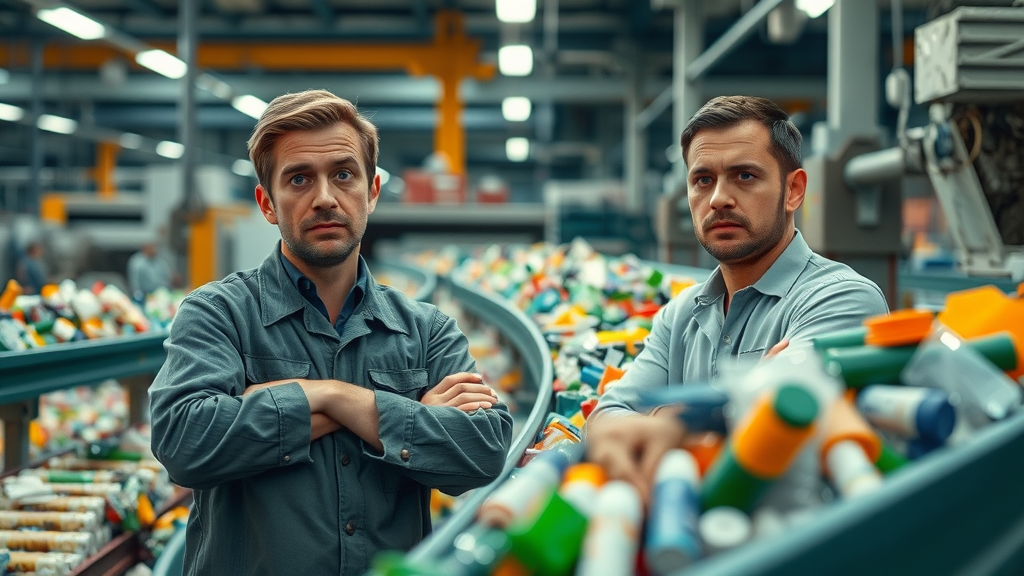
Why Most Plastic Recycling Fails
- The technical and economic limits of recycling plastic: Many plastics are difficult or expensive to recycle due to their chemical composition and contamination levels. Mechanical recycling—where plastics are washed, shredded, and melted—often downgrades material quality, and chemical recycling is not commercially viable at scale.
- Plastic recycling rates vs. plastic production: Plastic production has increased exponentially since the 1950s, but recycling rates remain stubbornly low. With new plastics being cheaper and easier to manufacture, there’s little commercial incentive to recycle plastic waste.
- Plastic waste management failures: Attempts to recycle plastic often result in exported bales of unsorted plastics, which end up burned, buried, or dumped in developing nations. The recycling rate promises made by the industry rarely align with reality, perpetuating a cycle of misinformation.
Who Benefits from Recycling Lies? The Role of the Plastics Industry
Who stands to gain from perpetuating recycling lies? The answer: the plastics industry and its vast network of trade associations, oil and gas backers, and public relations partners. These entities have poured billions into recycling campaigns—not to solve the solid waste problem, but to shield the plastic industry from regulation and preserve the image of plastic products as “environmentally friendly.”
Industry-funded recycling initiatives have proven to be effective publicity shields, shifting blame from those who make plastic to everyday people sorting bottles at home. Lobbying for advanced chemical recycling schemes, sometimes called “plastic-to-fuel” or “plastic-to-chemical,” creates the illusion of an imminent waste solution—even as many of these technologies remain unproven or are used to justify continued plastic production. The net result: a perpetuation of the recycling lie, buying time and profit for the industry while communities grapple with a worsening plastic crisis.
Plastic Industry Strategies to Sustain the Recycling Lie
- Funding of recycling campaigns: Vivid ads urge consumers to recycle plastic bottles while glossing over abysmal recycling rates and technical hurdles.
- The plastic crisis as a publicity shield: High-profile recycling initiatives distract from meaningful efforts to curtail plastic production, which continues to rise fueled by fossil fuel interests.
- Lobbying for chemical recycling schemes: By promoting “advanced recycling,” the industry preserves its business model even as independent studies and government reports (like those from Rob Bonta or the attorney general’s office) highlight its shortcomings as a practical waste solution.
Case Study: Chemical Recycling – Solution or Advanced Recycling Lie?
Chemical recycling is often showcased as the next big breakthrough—a process where plastics are broken down into their chemical components to be re-manufactured. But does it deliver on its lofty promises? The reality is stark: chemical recycling facilities are rarely scalable, often emit hazardous byproducts, and in some cases, simply convert plastic into low-grade fuel that is then burned. In effect, chemical recycling is less a solution and more a sophisticated extension of the ongoing recycling lie. The plastics recycling debate is now focused on whether these technologies will ever be implemented broadly or whether they simply serve as another chapter in the recycling lie, justifying more plastic production and more waste.
This case study shows how the plastics industry’s push for chemical recycling isn’t born of a desire to clean up the world but rather a calculated effort to extend the lifecycle of plastic products and the relevance of oil and gas companies—at the cost of real, lasting solutions to the plastic crisis.
Promises vs. Reality of Chemical Recycling
| Process | Mechanical Recycling | Chemical Recycling | Landfill/Incineration |
|---|---|---|---|
| Description | Plastics washed, shredded, and remelted into new products; quality degrades over cycles | Plastics broken down into basic chemicals for new use, usually high energy input | Plastic waste is discarded or burned; creates pollution and greenhouse gases |
| Economic Viability | Low for many plastic types; heavily subsidized; limited markets | Experimental and expensive; rarely commercially viable at scale | Lowest cost; highest environmental cost |
| Environmental Impact | Better than landfill, but results in downcycled, lower-quality material and greenhouse gas emissions | Emits hazardous byproducts; high carbon footprint; little circularity | Leads to plastic pollution, leaching, and substantial emissions |
| Share of Global Plastic Waste (approx.) | ~9% | <1% | ~90% |
The Global Plastic Crisis – Plastic Production versus Plastic Waste
At the heart of the recycling lie is the sobering reality that global plastic production keeps growing, even as plastic recycling stagnates. Today, the amount of plastic produced annually easily outpaces our ability to recycle plastic, resulting in an ever-mounting plastic waste problem. In the last two decades alone, plastic production has doubled, driven by oil and gas companies seeking alternatives to diminishing fuel markets. Yet the recycling rate remains low, with most plastic waste ending up in solid waste streams that are underfunded and overwhelmed. The plastics industry points to minor improvements in plastics recycling technology, but the gap between new plastics and recycled plastics continues to widen.
The environmental and social costs are devastating: plastic pollution infiltrates waterways and food chains, endangers marine and land life, and disproportionately impacts communities near production sites and waste dumps. Whether measured in tons of plastic waste discarded, wildlife harmed, or communities exposed to toxic byproducts, the price of the ongoing plastic crisis—fueled by recycling lies—is being paid globally, every day, by people who never agreed to this trade-off.
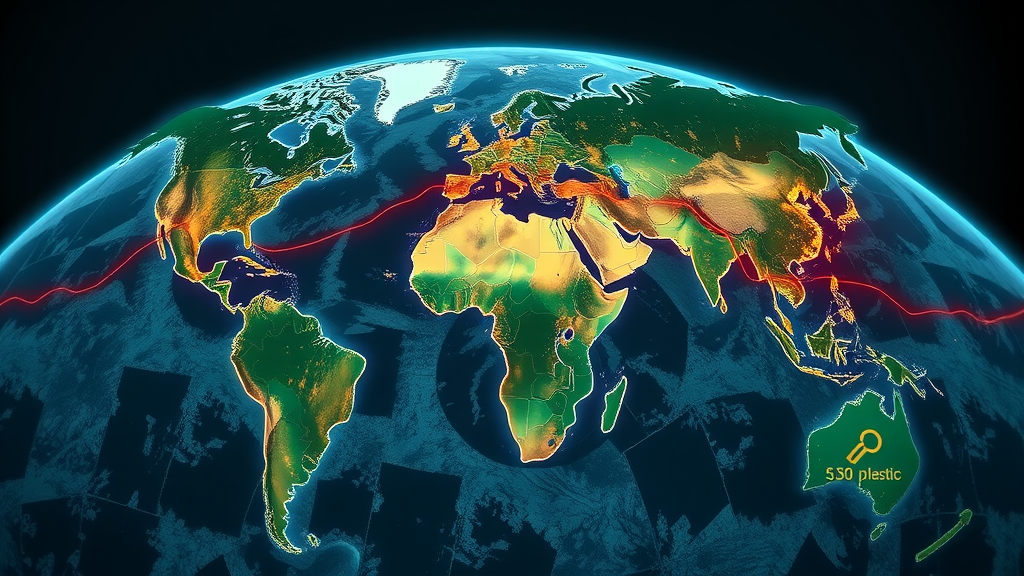
The Ever-Increasing Tide of Plastic Waste and Its Lasting Consequences
- Statistics on plastic production growth: In 1950, the world produced 2 million tons of plastic a year. Today, we produce more than 400 million tons annually, and that number is expected to double by 2040 if current trends continue.
- The gap between recycled plastic and new plastic production: While plastic production rises sharply, the percentage of plastic recycled remains largely unchanged, leaving a chasm between promises and reality.
- Environmental and social costs: Plastic pollution contaminates habitats, threatens public health, and imposes costs on communities least equipped to manage the waste problem.
How the Recycling Lie Influences Everyday Choices
Every time you rinse out a plastic bottle, check for the recycling symbol, and toss it in the bin, you might feel like you’re helping fight the plastic crisis. However, the reality is that personal recycling rarely solves the problem—it’s systemic changes at the manufacturing and policy level that matter most. The recycling lie has successfully offloaded the responsibility for the tidal wave of plastic waste from the plastics industry to the consumer, creating a misplaced hierarchy of blame.
While every small effort counts, the volume of plastic waste and the limitations of our recycling infrastructure mean that individual choices are not enough to stem the tide. The role of companies and policymakers is central—through product redesign, production caps, and genuine waste reduction policies, real change can occur. Until then, the narrative that individual recycling can overcome an industrial-scale waste solution problem merely perpetuates the recycling lie and delays meaningful action.
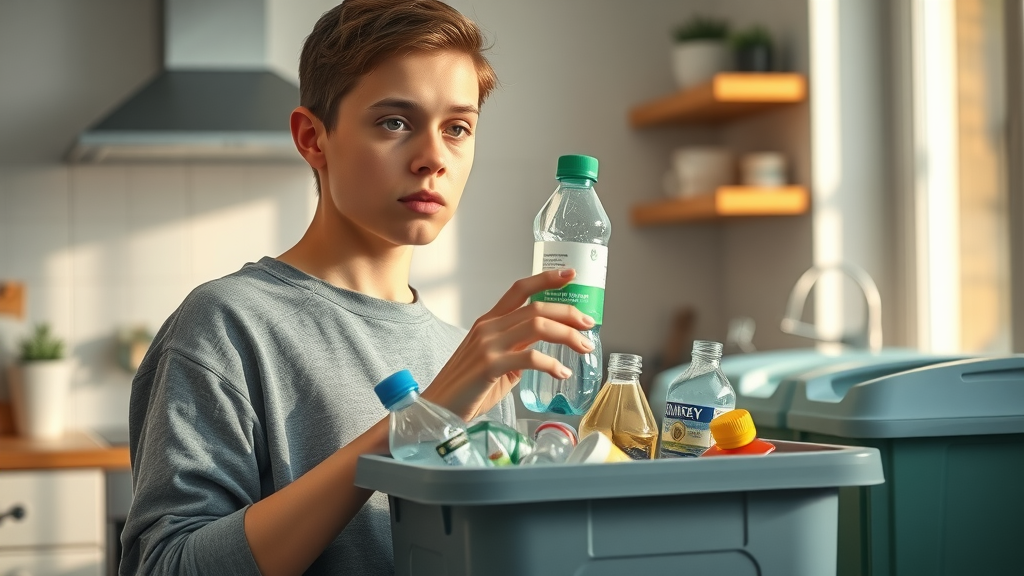
Consumer Responsibility vs. Systemic Change
- Why personal recycling doesn’t solve the plastic crisis: The scale of plastic production simply overwhelms what average residents, even with diligent efforts, can divert from waste streams.
- The role of companies and policymakers: Product redesign, extended producer responsibility laws, bans on difficult-to-recycle plastics, and policy innovation are essential to reduce waste upstream—where the problem begins.
Criticism of Recycling: Why Skepticism Exists
Critics argue that recycling, as it’s commonly practiced (especially for plastics), serves as a convenient excuse for continued overproduction and waste. Instead of actually solving the problem, recycling programs—promoted by trade associations, oil and gas interests, and plastic industry spin groups—allow companies like Coca-Cola or Pepsico to claim green credentials without addressing the root causes of the plastic crisis. The perception that the recycling lie is an intentional public relations ruse to maintain profit and political power is not unfounded; mounting lawsuits and government reviews, including those by attorney general Rob Bonta, reveal decades of misleading messaging.
Industry representatives point out incremental improvements, but the chief criticisms remain: recycling rates remain low, the recycling symbol is misleading, and too few incentives exist to actually recycle plastic on the necessary scale. True waste solutions must do more than maintain the recycling status quo.
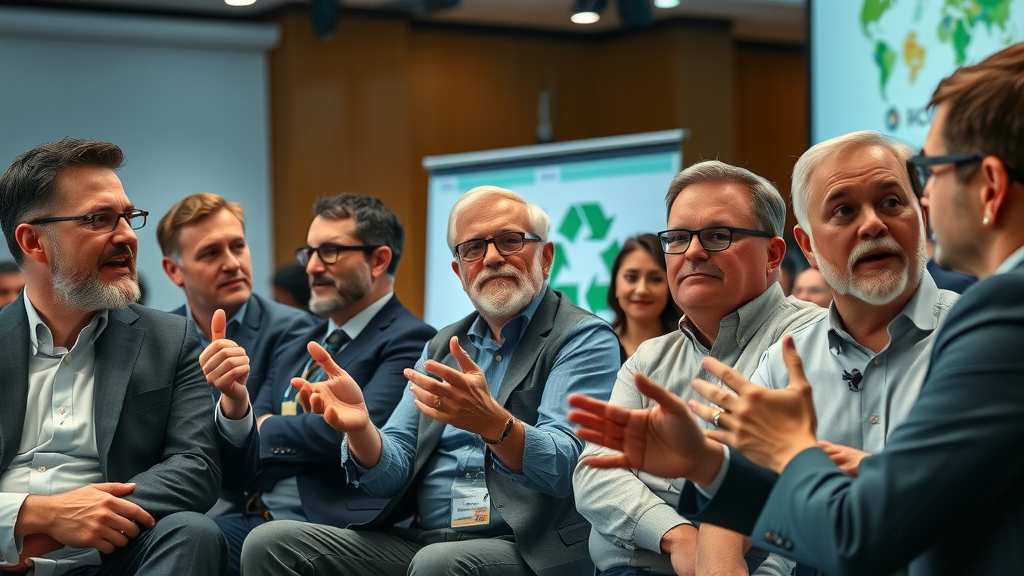
- Recycling diverts attention from systemic change required to end the plastic crisis.
- Plastic recycling rates remain dismally low due to technical and economic barriers.
- “Advanced recycling” and chemical recycling are celebrated more for their public relations value than actual impact.
- Plastic waste is exported, burned, or dumped rather than truly recycled.
- Industry lobbying and misleading recycling symbols fool the public into supporting the status quo.
"Recycling is a convenient excuse, not a true solution for the plastic crisis."
What We Should Do Instead: Beyond the Recycling Lie
- Reduction: The most effective way to address the plastic waste problem is to produce and consume less plastic. Bans on certain single-use items and supporting products made from reusable or refillable materials can help.
- Reuse: Emphasize reusable containers and products, which have a far greater impact than recycling alone.
- Policy reform: Advocate for laws that require producers to take back and manage their own plastic waste through extended producer responsibility and deposit laws.
- Plastic credits: Support initiatives like plastic credits, which incentivize the removal and proper disposal of plastic waste—making producers accountable for the plastic they put on the market.
Key Takeaways: Breaking Free from the Cycle of Recycling Lies
- The recycling lie is an industry-crafted narrative to divert scrutiny from plastic producers and minimize accountability.
- True solutions require upstream reform—production cuts and policy initiatives that hold the plastics industry, oil and gas companies, and corporations responsible for the plastic crisis.
- Support real change: Stay informed, question misleading narratives, and back organizations or legislation pushing for genuine waste management solutions over recycling lies.
People Also Ask: What does God say about recycling?
Exploring Religious Perspectives on Recycling and Stewardship
Many religious traditions emphasize stewardship and care for the Earth, a value that aligns with responsible waste management. While there are no explicit Bible verses about “recycling,” Christian teachings advocate for stewardship of God’s creation and the avoidance of waste. By drawing connections between faith and ecological responsibility, religious leaders exhort their communities to look beyond personal convenience and prioritize actions that benefit the whole of creation. This underscores that responsible plastic management is not just a secular issue, but a moral duty—further challenging the sufficiency of the recycling lie.
People Also Ask: Are Coca-Cola bottles really 100% recycled?
Separating Facts from Marketing in Beverage Industry Claims
Claiming that bottles are made from “100% recycled plastic” is a powerful marketing statement, but it doesn’t tell the full story. Most beverage giants, including Coca-Cola, use a blend of new and recycled plastics, with only some regions offering truly 100% recycled content. Furthermore, even “recyclable” bottles are rarely recycled back into new bottles—most plastics are downgraded or lost to landfills. Such claims, while well-intentioned, contribute to persistent recycling lies by suggesting that a closed-loop, circular economy for all plastics is already achieved, when in reality plastic recycling remains riddled with inefficiencies and limitations.
People Also Ask: What are the criticism of recycling?
The Main Points Critics Have Raised About the Efficacy of Recycling
Chief criticisms of plastic recycling center on its inefficiency, high cost, and low recycling rate. Most plastics degrade in quality and can only be recycled a finite number of times. Additionally, recycling can distract from more impactful, systemic solutions such as reducing plastic production and passing stricter regulations on solid waste. The biggest criticisms are that recycling rates are low, often exaggerated, and the burden of waste management is unfairly shifted onto consumers rather than industry. Many advocacy groups and public officials, such as some attorney generals, highlight the need for industry accountability and upstream policy changes over public relations-driven recycling campaigns.
People Also Ask: Can plastic recycling ever really work?
Is There a Future Where Plastic Recycling Is Truly Effective?
Plastic recycling could become more effective with significant changes—better design for recyclability, improved waste sorting technology, government-mandated product take-back programs, and major reductions in plastic production. However, as long as the economics favor new plastic production and recycling is used as a cover for ongoing growth, the system will struggle to deliver on its promises. Many experts believe true progress comes from a combination of upstream solutions, technological innovation, and policy overhauls that end the reliance on recycling as an all-purpose waste solution.
FAQs: Recycling Lies Unmasked
-
Is the recycling symbol always honest?
Not always. Many products display the recycling symbol (the “chasing arrows”), but that doesn’t guarantee the item can be recycled in most municipal programs. This misleading labeling is part of the recycling lie that gives consumers false assurance. -
What are the biggest recycling myths?
The biggest myths include the belief that all plastic is recyclable, that recycling always closes the loop, and that our recycling rate is high enough to make plastics sustainable. In truth, only select plastic types are recycled and most plastics degrade quickly or are sent overseas for disposal. -
How does the plastics industry influence recycling policy?
Through lobbying, funding public education campaigns, and promoting advanced recycling schemes, the plastics industry has long swayed recycling policies, often prioritizing continued plastic production over true waste solutions.
Corsair Plastic Credit Affiliate Opportunity
How You Can Join the Fight Against Recycling Lies and Plastic Waste
Ready to fight back against industry-crafted recycling lies? The Corsair Plastic Credit Affiliate Opportunity lets you participate in a real solution—funding the removal and responsible management of plastic waste. Take your activism further and help build a movement for change.
Join the Corsair Plastic Credit Affiliate Program Here
Conclusion: Moving Past Recycling Lies Towards True Environmental Solutions
"It's time to see recycling lies for what they are—a barrier to real progress. True change begins when we demand better from industries and ourselves."
The article “What Most People Don’t Know About Recycling Lies” sheds light on the misconceptions surrounding plastic recycling and the role of the plastics industry in perpetuating these myths. To further explore this topic, consider the following resources:
-
“Plastic Recycling is a Lie”: This article from Earth Day highlights how the plastics industry has promoted recycling as a solution to plastic waste, despite knowing its limitations. It emphasizes the need for reducing plastic production and consumption to address the environmental crisis effectively. (earthday.org)
-
“‘They lied’: plastics producers deceived public about recycling, report reveals”: An investigative piece by The Guardian that uncovers how plastics producers have misled the public about the effectiveness of recycling, contributing to the ongoing plastic pollution problem. (theguardian.com)
These resources provide in-depth analyses of the recycling myths and the industry’s role in shaping public perception. If you’re serious about understanding the complexities of plastic recycling and seeking sustainable solutions, these articles offer valuable insights.
 Add Row
Add Row  Add
Add 




Write A Comment